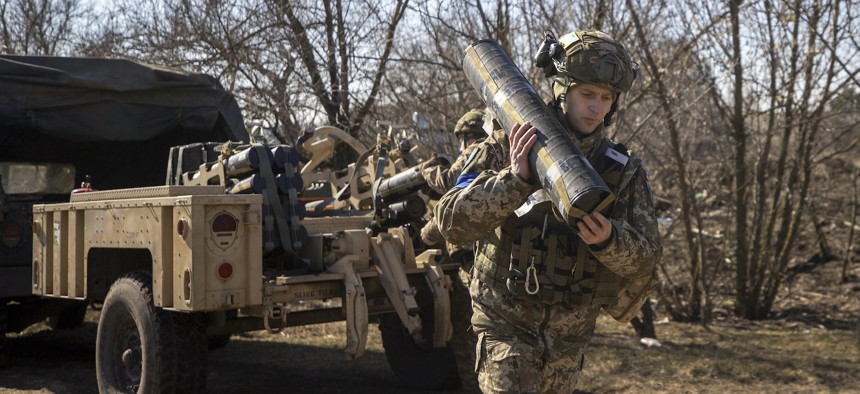SAM SKOVE
 A lack of machine tools is constraining the United State's ability to ramp up ammunition transfers to Ukraine, the Army's top weapons buyer said March 3.
A lack of machine tools is constraining the United State's ability to ramp up ammunition transfers to Ukraine, the Army's top weapons buyer said March 3.The timeline for acquiring new machine tools “are often the long poles in the tent on getting capacity increased,” said Douglas Bush, assistant Army secretary of the Army for Acquisition, Logistics, and Technology. “These machines are the size of buildings. You don’t just go buy it from a parking lot somewhere.”
U.S. and allied production of artillery ammunition has emerged as a key problem in supplying Ukraine, which burns through thousands of shells a day fighting Russia’s invasion. Ukraine may lose the war if it doesn’t receive enough supplies, European Union foreign policy chief Josep Borrel said Feb. 20.
Obtaining the raw materials might be a problem eventually, but not yet, Bush said at an event held by the Center for Strategic and International Studies.
The U.S. already maintains large stockpiles of some key raw materials, such as the precursor chemicals for explosives, Bush said. But how much of other raw materials the U.S. should keep in reserve is an open question. “The issue is really stockpiling, Bush said, “It’s really a question of how much you can afford to do.”
The U.S. has no shortage of raw materials used for artillery shell manufacture, Bush added, citing more than adequate supplies of steel.
Bush also pointed to allied production capabilities as potentially taking the stress off of U.S. manufacturing, noting Polish interest in manufacturing the Javelin—an anti-tank guided missile—and Australian interest in manufacturing precision-guided munitions.
The U.S. has already supplied large amounts of artillery ammunition to Ukraine, sending more than a million 155mm rounds, according to research by Mark Cancian, a senior advisor at the Center for Strategic and International Studies. The ammunition feeds artillery pieces donated to Ukraine by the U.S. and NATO allies. On Friday, the Department of Defense announced another tranche of military aid to Ukraine that includes 155mm artillery rounds.
U.S. officials said in April 2022 that they were ramping up production of 155mm shells, the most common caliber of the U.S. and NATO-ally artillery guns sent to Ukraine. Production is set to rise to 20,000 shells per month by spring 2023, and 40,000 per month by 2025, Secretary of the Army Christine Wormuth said.
Even that rate, though, may not be enough to support Ukraine and keep U.S. inventories prepped for other wars across the globe. “This could become a crisis,” Cancian wrote.
No comments:
Post a Comment